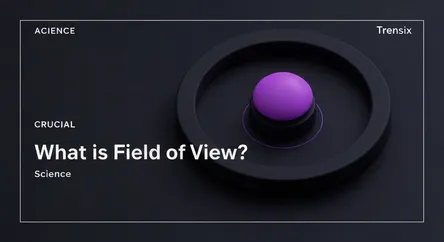Science
What is Field of View?

Discover what Field of View (FOV) is, the observable area seen through a device. Learn why it's key in astronomy, VR, and everyday photography.
What is it?
Field of View (FOV) is the extent of the observable world seen at any given moment. For an optical instrument like a camera or telescope, it represents the slice of the world you can see without moving. It's typically measured in angular degrees. A narrow FOV is like looking through a straw, focusing on a small detail, while a wide FOV provides a panoramic, broader perspective. This fundamental concept in optics dictates how much information is captured in a single frame or glance.
Why is it trending?
The term is gaining traction due to major tech advancements. New space observatories like the James Webb Space Telescope have specific fields of view designed for capturing vast cosmic landscapes. Simultaneously, the explosion of virtual reality (VR) and augmented reality (AR) hinges on creating a wide, immersive FOV to trick the brain into feeling present. In consumer tech, discussions around ultra-wide smartphone cameras and high-FOV gaming monitors have also pushed the term into the mainstream.
How does it affect people?
FOV directly impacts our perception and interaction with technology. In astronomy, a wider field of view allows scientists to survey larger areas of the sky more efficiently. For photographers, it's the difference between a landscape shot and a detailed portrait. In gaming and VR, a larger FOV enhances immersion and can reduce motion sickness. It even affects practical things like the coverage area of a security camera or the blind spots while driving, fundamentally shaping our visual experience.